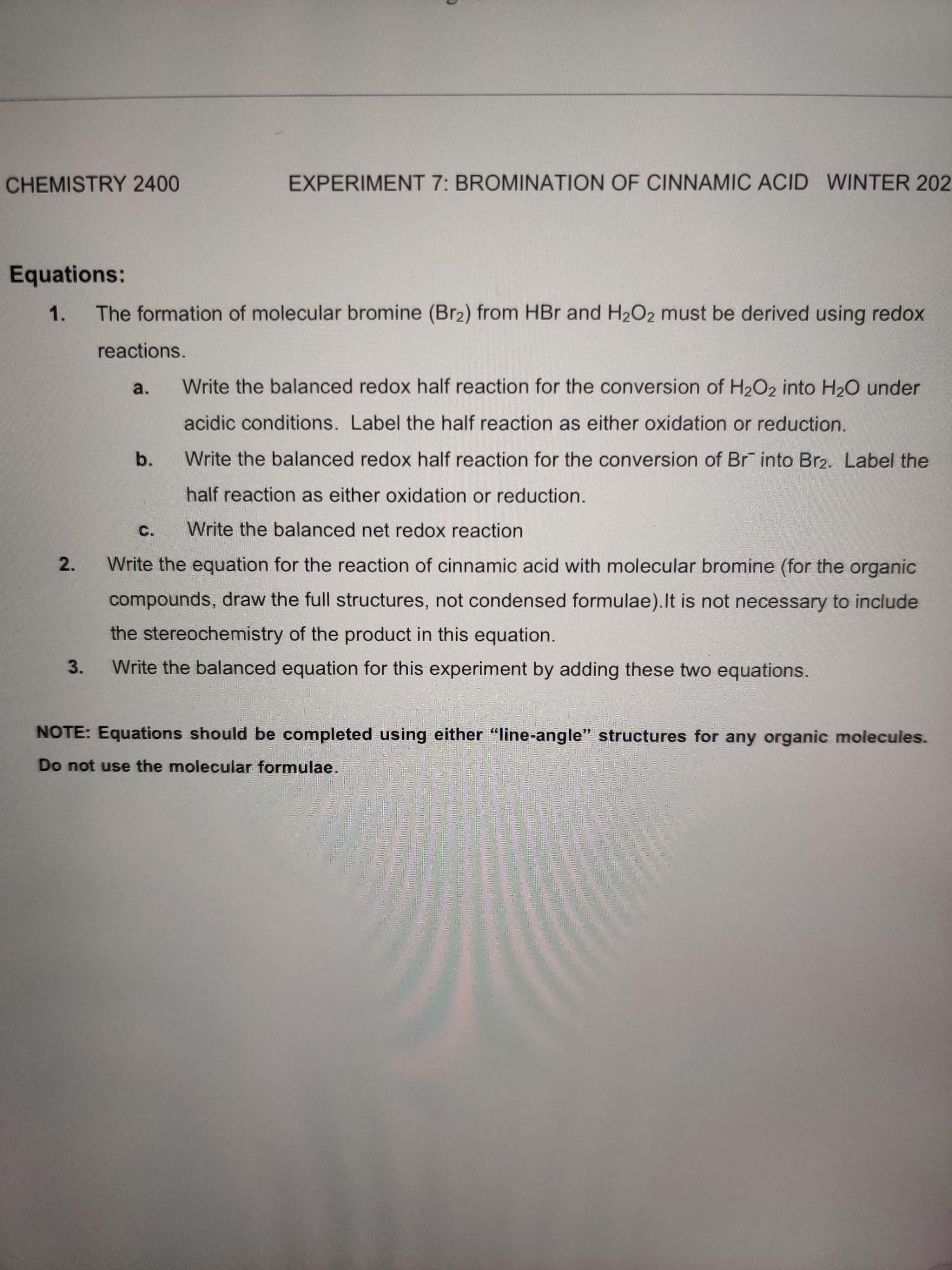The formation of molecular bromine (Br2) from HBr and H2O2 must be derived using redox reactions. Write the balanced redox half reaction for the conversion of H2O2 into H20 under a. acidic conditions. Label the half reaction as either oxidation or reduction. b. Write the balanced redox half reaction for the conversion of Br into Br2. Label the half reaction as either oxidation or reduction. с. Write the balanced net redox reaction Write the ation
The formation of molecular bromine (Br2) from HBr and H2O2 must be derived using redox reactions. Write the balanced redox half reaction for the conversion of H2O2 into H20 under a. acidic conditions. Label the half reaction as either oxidation or reduction. b. Write the balanced redox half reaction for the conversion of Br into Br2. Label the half reaction as either oxidation or reduction. с. Write the balanced net redox reaction Write the ation
Chemistry for Engineering Students
4th Edition
ISBN:9781337398909
Author:Lawrence S. Brown, Tom Holme
Publisher:Lawrence S. Brown, Tom Holme
Chapter13: Electrochemistry
Section: Chapter Questions
Problem 13.39PAE: Some calculators cannot display results of an antilog calculation if the power of 10 is greater than...
Related questions
Question

Transcribed Image Text:CHEMISTRY 2400
EXPERIMENT 7: BROMINATION OF CINNAMIC ACID WINTER 202.
Equations:
1.
The formation of molecular bromine (Br2) from HBr and H2O2 must be derived using redox
reactions.
a.
Write the balanced redox half reaction for the conversion of H2O2 into H20 under
acidic conditions. Label the half reaction as either oxidation or reduction.
b.
Write the balanced redox half reaction for the conversion of Br into Br2. Label the
half reaction as either oxidation or reduction.
C.
Write the balanced net redox reaction
2.
Write the equation for the reaction of cinnamic acid with molecular bromine (for the organic
compounds, draw the full structures, not condensed formulae).It is not necessary to include
the stereochemistry of the product in this equation.
3.
Write the balanced equation for this experiment by adding these two equations.
NOTE: Equations should be completed using either "line-angle" structures for any organic molecules.
Do not use the molecular formulae.
Expert Solution
This question has been solved!
Explore an expertly crafted, step-by-step solution for a thorough understanding of key concepts.
This is a popular solution!
Trending now
This is a popular solution!
Step by step
Solved in 2 steps

Knowledge Booster
Learn more about
Need a deep-dive on the concept behind this application? Look no further. Learn more about this topic, chemistry and related others by exploring similar questions and additional content below.Recommended textbooks for you

Chemistry for Engineering Students
Chemistry
ISBN:
9781337398909
Author:
Lawrence S. Brown, Tom Holme
Publisher:
Cengage Learning

Introductory Chemistry: A Foundation
Chemistry
ISBN:
9781337399425
Author:
Steven S. Zumdahl, Donald J. DeCoste
Publisher:
Cengage Learning

Chemistry by OpenStax (2015-05-04)
Chemistry
ISBN:
9781938168390
Author:
Klaus Theopold, Richard H Langley, Paul Flowers, William R. Robinson, Mark Blaser
Publisher:
OpenStax

Chemistry for Engineering Students
Chemistry
ISBN:
9781337398909
Author:
Lawrence S. Brown, Tom Holme
Publisher:
Cengage Learning

Introductory Chemistry: A Foundation
Chemistry
ISBN:
9781337399425
Author:
Steven S. Zumdahl, Donald J. DeCoste
Publisher:
Cengage Learning

Chemistry by OpenStax (2015-05-04)
Chemistry
ISBN:
9781938168390
Author:
Klaus Theopold, Richard H Langley, Paul Flowers, William R. Robinson, Mark Blaser
Publisher:
OpenStax

Chemistry: An Atoms First Approach
Chemistry
ISBN:
9781305079243
Author:
Steven S. Zumdahl, Susan A. Zumdahl
Publisher:
Cengage Learning

Chemistry
Chemistry
ISBN:
9781305957404
Author:
Steven S. Zumdahl, Susan A. Zumdahl, Donald J. DeCoste
Publisher:
Cengage Learning
